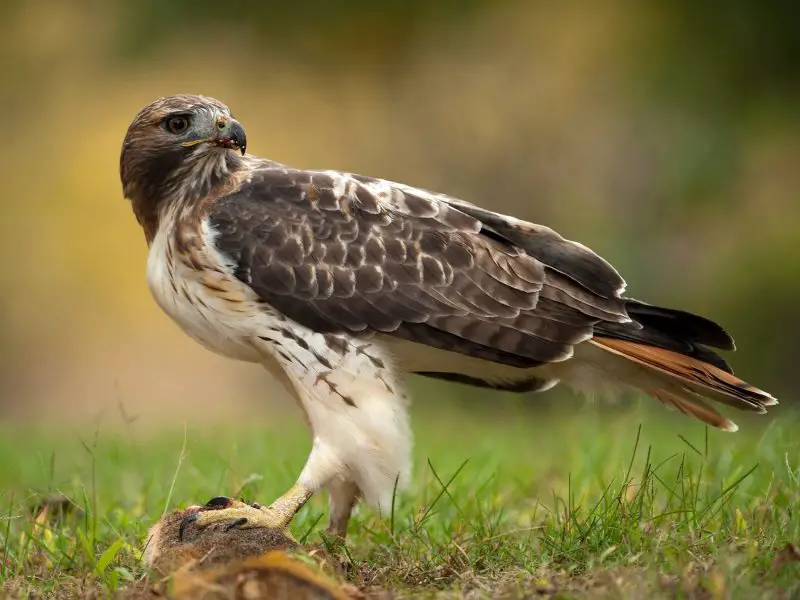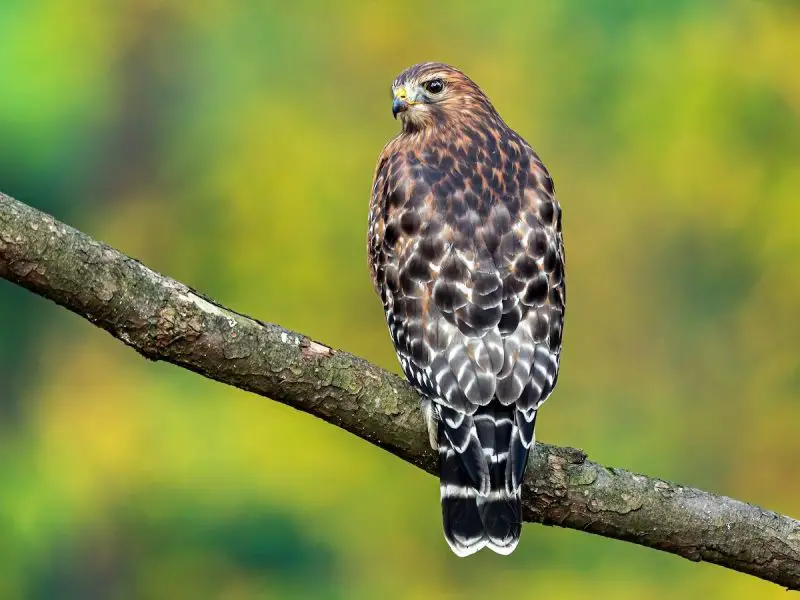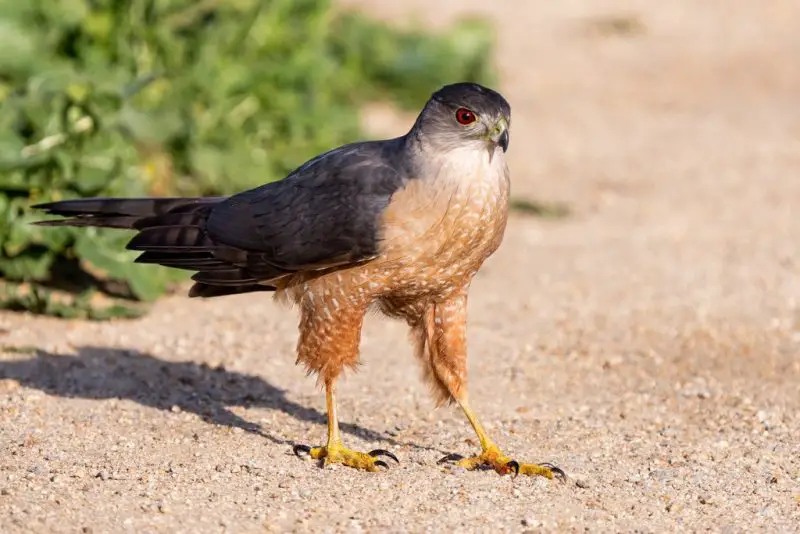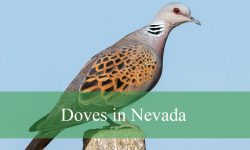If you live in Georgia and keep backyard chickens, you’ve probably seen a hawk circling overhead at least once. Its sharp cry echoes through the sky, and your heart might sink as you imagine those powerful talons swooping down toward your flock. But how much of a threat are hawks to chickens?
The short answer is yes—hawks in Georgia do sometimes attack backyard chickens. However, not every hawk is a danger, and not every flock is equally at risk. These birds of prey are part of Georgia’s natural ecosystem, and understanding their habits can help you protect your flock without breaking any wildlife laws.
In this detailed guide, you’ll learn which hawks in Georgia target chickens, why they do it, how to recognize signs of an attack, and most importantly, how to safeguard your flock humanely and effectively.
Common Hawks Found in Georgia
Georgia’s landscape supports several species of hawks year-round. While most are harmless to humans, some are powerful enough to prey on backyard chickens—especially if the birds are young or left unprotected.
Red-tailed Hawk (Buteo jamaicensis)

The Red-tailed Hawk is the most widespread raptor in Georgia. Large, broad-winged, and skilled at soaring, this hawk prefers open areas like fields, pastures, and suburban lawns—exactly where many people keep chickens.
Red-tails primarily hunt rabbits, squirrels, and rodents, but they can and do take chickens, particularly smaller breeds. They strike fast, using powerful talons to subdue prey instantly.
Red-shouldered Hawk (Buteo lineatus)

Common throughout Georgia’s wooded suburbs and wetlands, the Red-shouldered Hawk is slightly smaller than the Red-tail but just as capable. They often hunt near backyards and are one of the most frequent hawks to appear around human habitation.
These hawks are daytime hunters, often perching silently near forest edges. Chickens that wander too far from cover are vulnerable to surprise attacks.
Cooper’s Hawk (Accipiter cooperii)

The Cooper’s Hawk is a swift, agile hunter that prefers smaller prey—typically songbirds, doves, and small mammals. In suburban areas, however, it occasionally mistakes smaller chickens or young pullets for wild birds.
Though not as strong as a Red-tail, a Cooper’s Hawk can cause fatal injuries to lightweight or bantam chickens.
Why Hawks Attack Backyard Chickens
Natural Hunting Instinct
Hawks are predators by nature. They rely on small- to medium-sized animals to survive. A backyard full of clucking, slow-moving chickens can appear as an irresistible buffet from above.
Chickens are easy to spot, easy to catch, and often lack the instincts or agility of wild prey. This makes them tempting targets for a hungry hawk—especially during nesting seasons when raptors need extra food for their chicks.
Environmental Changes
As Georgia’s suburbs expand, hawks are adapting to human environments. Open lawns, golf courses, and neighborhood parks provide hunting opportunities similar to meadows or clearings. Backyard chickens simply fit into this evolving landscape.
The loss of natural prey—due to pesticide use or habitat loss—also drives hawks closer to residential areas in search of food.
Seasonal Hunger
Hawk attacks are most common during late fall and winter when other food sources become scarce. During this time, smaller flocks without overhead cover are at a greater risk.
Signs of a Hawk Attack
Not all chicken deaths are caused by hawks. Ground predators like raccoons or foxes often leave different signs. To know for sure, look for these clues that point to an aerial predator:
Distinguishing Signs
- Attack during daylight – Hawks hunt in the daytime, unlike nocturnal predators.
- Cleanly plucked feathers – Hawks pluck feathers before feeding, usually around the breast or neck area.
- No digging or claw marks – If the coop isn’t broken into or dug under, the predator likely came from above.
- Partial carcass or missing bird – Hawks sometimes carry off small chickens entirely.
- Scattered feathers near open areas – The attack usually happens where chickens forage in the open.
If your chickens vanish without evidence of a break-in or if you see a hawk nearby shortly after, it’s likely an aerial strike.
When Chickens Are Most Vulnerable
Free-Ranging Flocks
Chickens allowed to roam freely in open yards without trees or netting are the most exposed. A hawk can easily spot and dive at a bird feeding in plain sight.
Lack of Overhead Shelter
An uncovered run or yard gives hawks a clear flight path. Without trees, shrubs, or other hiding spots, chickens can’t evade fast attacks.
Smaller Breeds and Pullets
Young or bantam chickens are especially vulnerable due to their size. A large Red-tailed Hawk can easily carry off birds under three pounds.
Quiet, Isolated Areas
If your property is quiet with few human disturbances, hawks may feel comfortable enough to hunt near your flock. Regular activity, pets, or movement can discourage them.
Legal Protection of Hawks in Georgia
Before taking action, it’s crucial to understand the law.
All hawks in Georgia are protected under the Migratory Bird Treaty Act, a federal law that makes it illegal to kill, trap, or harass these birds without a special permit. Even if a hawk attacks your chickens, you cannot legally harm it.
Violating this law can result in heavy fines or criminal penalties. The correct approach is prevention—not retaliation. By securing your flock, you can deter hawks effectively while respecting wildlife regulations.
How to Protect Your Chickens from Hawks
1. Install Overhead Protection
The best defense against hawks is physical separation. Cover your chicken run with sturdy bird netting or hardware cloth. A simple mesh canopy prevents swooping attacks and also deters other aerial predators like owls.
2. Add Visual Barriers and Cover
Give your chickens places to hide. Plant shrubs, install low wooden shelters, or place overturned crates within the run. Even a few hiding spots can save a chicken’s life.
Bobcats, foxes, and hawks all prefer open ground when attacking—dense cover interrupts their line of sight.
3. Keep Chickens Close to Trees or Structures
Free-range birds are safest near natural cover. Tall trees, fences, and coops offer quick refuge. Avoid keeping chickens in the middle of wide, open yards where hawks have the advantage.
4. Use Reflective Deterrents
Hang shiny CDs, reflective tape, or aluminum pie plates around the coop. The flickering light confuses hawks and discourages them from approaching. Some chicken owners also use motion-activated lights or decoy owls to keep hawks away.
5. Supervise Free-Range Time
Allow your flock to forage only when you’re nearby, especially during known hunting times—early morning and late afternoon. Human presence alone deters most hawks.
6. Get a Rooster or Guardian Animal
A good rooster acts as an early warning system. He’ll sound the alarm when danger is near, giving hens time to run for cover. In some cases, larger livestock guardian dogs like Great Pyrenees can also protect chickens by patrolling the area.
7. Feed and Water Under Shelter
Hawks often strike when chickens are distracted while feeding. Place feeders and waterers under covered areas or inside coops to reduce exposure.
8. Avoid Leaving Carcasses or Feed Out
Leaving feed or carcasses outside can attract scavengers and predators. Keep the area clean to avoid inviting hawks or other opportunists.
Creating a Hawk-Resistant Yard
Designing your yard with both chickens and wildlife in mind can reduce conflict.
Use Landscape Features Strategically
Plant native shrubs or small trees around the chicken yard for natural cover. Choose dense, fast-growing plants like holly, wax myrtle, or yaupon to create hiding spots and visual barriers.
Maintain a Balanced Ecosystem
Encourage natural prey species like mice and small rodents away from your chickens by proper waste management. If hawks find abundant food elsewhere, they’re less likely to target your flock.
Secure Coop Entrances
Although hawks hunt by day, ensure your coop is predator-proof for night safety. Reinforce doors with latches and bury wire at least 12 inches underground to deter digging animals like raccoons and foxes.
Hawks Versus Other Chicken Predators in Georgia
Sometimes, what seems like a hawk attack may actually be the work of another predator. Recognizing the difference helps you take the right action.
Predator |
Time of Attack |
Common Signs |
Prevention |
|---|---|---|---|
Hawks |
Daytime |
Cleanly plucked feathers, missing birds |
Overhead netting, cover |
Owls |
Nighttime |
Missing heads, puncture wounds |
Lock chickens up at dusk |
Raccoons |
Nighttime |
Torn coop wire, missing parts |
Secure latches, hardware cloth |
Foxes |
Early morning or dusk |
Carried-off chickens, digging |
Bury fencing |
Coyotes |
Dusk or dawn |
Entire birds missing |
Fencing, guard dogs |
Myths About Hawks and Chickens
Myth 1: Hawks Only Hunt Small Birds
While smaller birds are easier prey, large hawks can take adult hens. Even roosters aren’t entirely safe if the hawk is desperate.
Myth 2: Hawks Never Hunt Near People
Hawks are adaptable. Many now hunt near neighborhoods and parks where food is abundant. Some are even comfortable hunting near humans if undisturbed.
Myth 3: Hanging a Fake Owl Solves the Problem
While decoy owls can deter hawks initially, they lose effectiveness once hawks realize the decoy doesn’t move. Combine decoys with other deterrents for lasting results.
Myth 4: It’s Legal to Kill a Hawk to Protect Chickens
This is false. Hawks are federally protected, and harming one can result in severe penalties. Prevention is the only legal and ethical solution.
Encouraging Coexistence
Hawks are vital to Georgia’s ecosystems. They control rodent and snake populations and help maintain a healthy balance in nature. Eliminating them would cause ecological imbalance, leading to pest outbreaks.
By protecting your chickens effectively, you can coexist peacefully with these majestic raptors. Instead of fearing hawks, see them as a reminder that your backyard is part of a larger, living ecosystem.
Conclusion
So, do hawks in Georgia attack backyard chickens? Yes, they do—but not as often as many fear. Most attacks happen when flocks are unprotected in open spaces with no shelter or supervision.
The best defense is prevention: provide cover, install netting, and maintain vigilance during peak hunting times. By designing your yard with both safety and nature in mind, you can enjoy the rewards of raising chickens while preserving Georgia’s raptor population.
Hawks aren’t villains—they’re skilled hunters doing what nature designed them to do. With the right balance of caution and respect, your flock can live safely beneath Georgia’s open skies.






